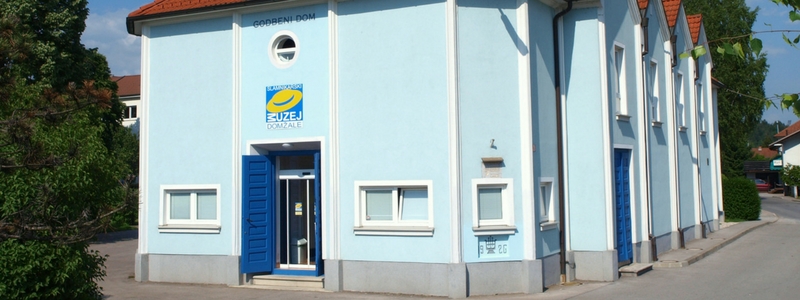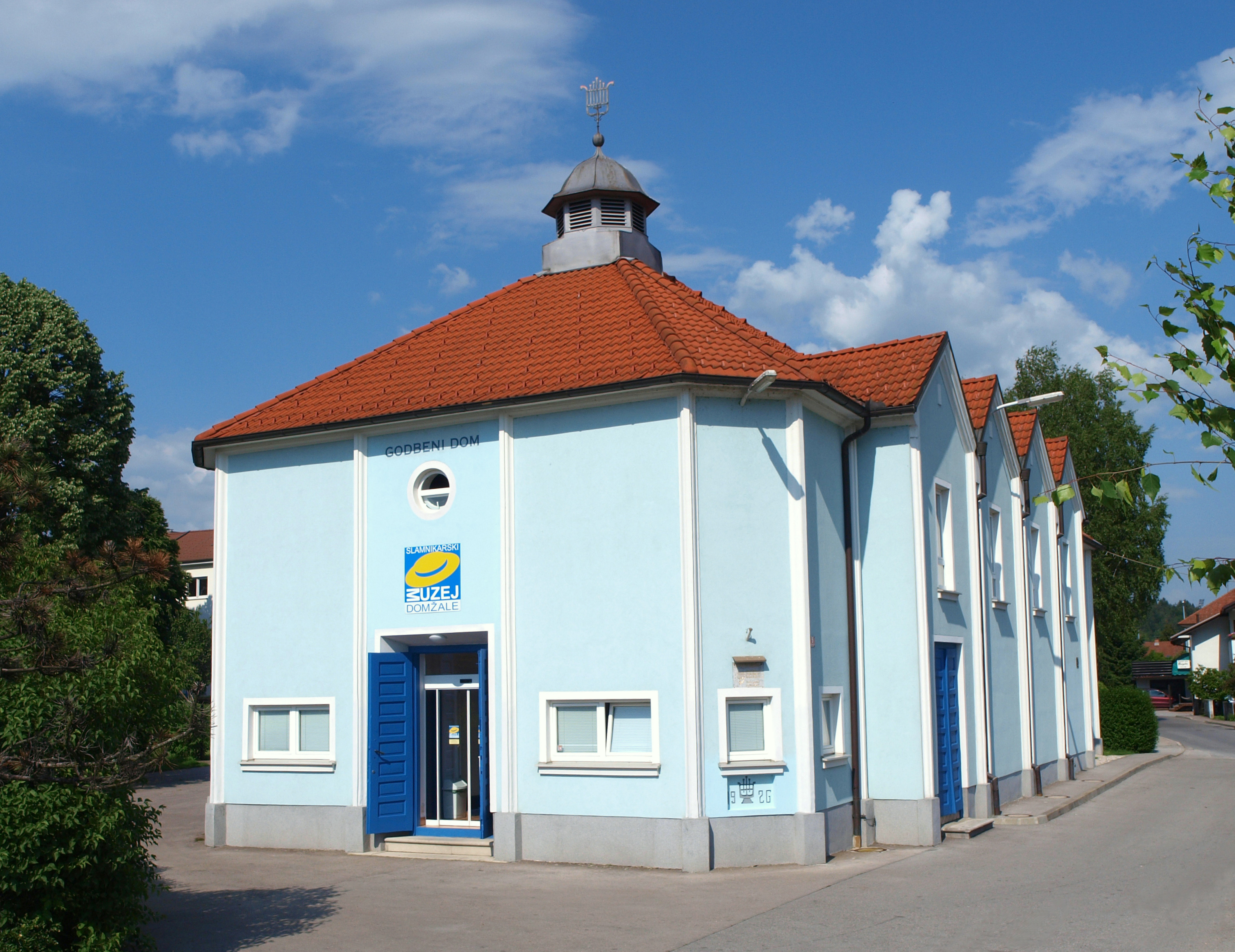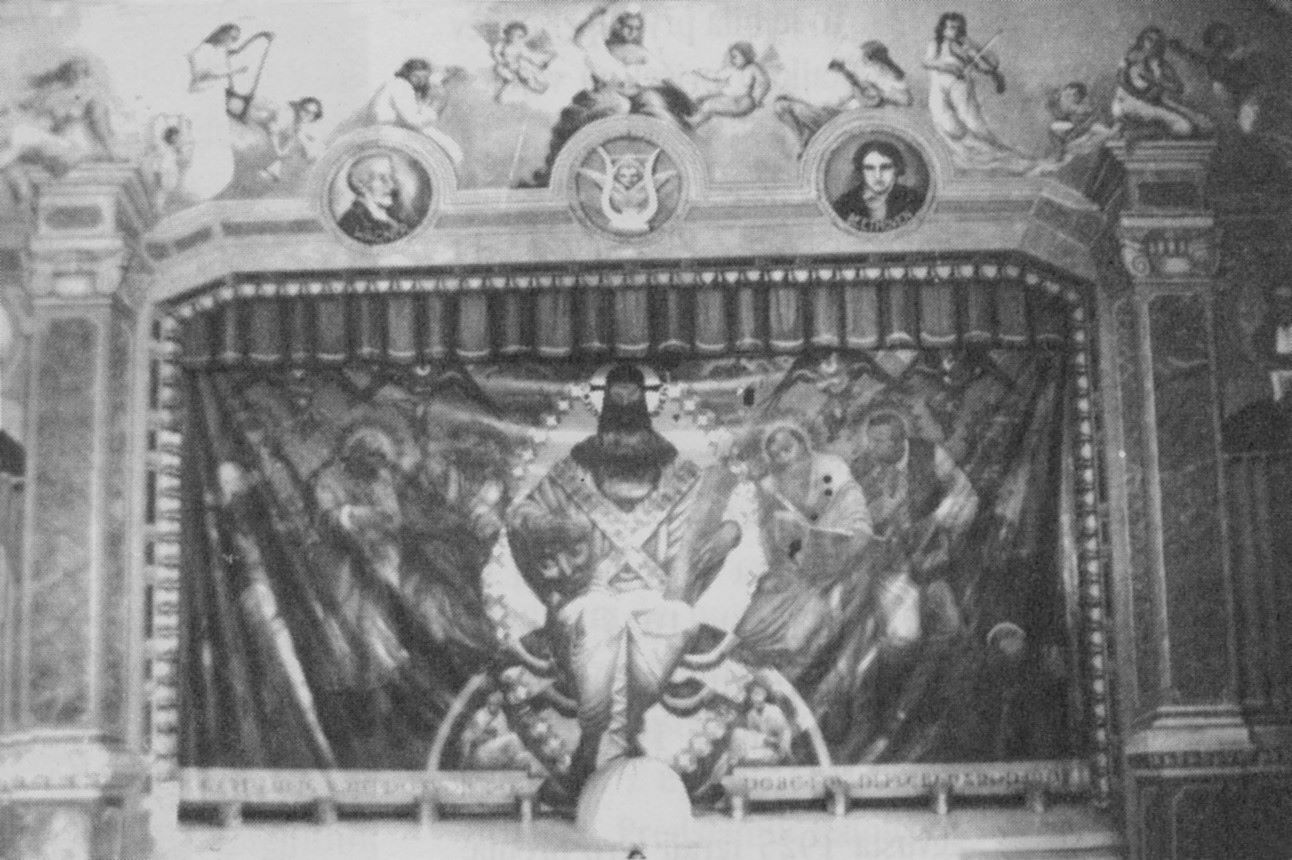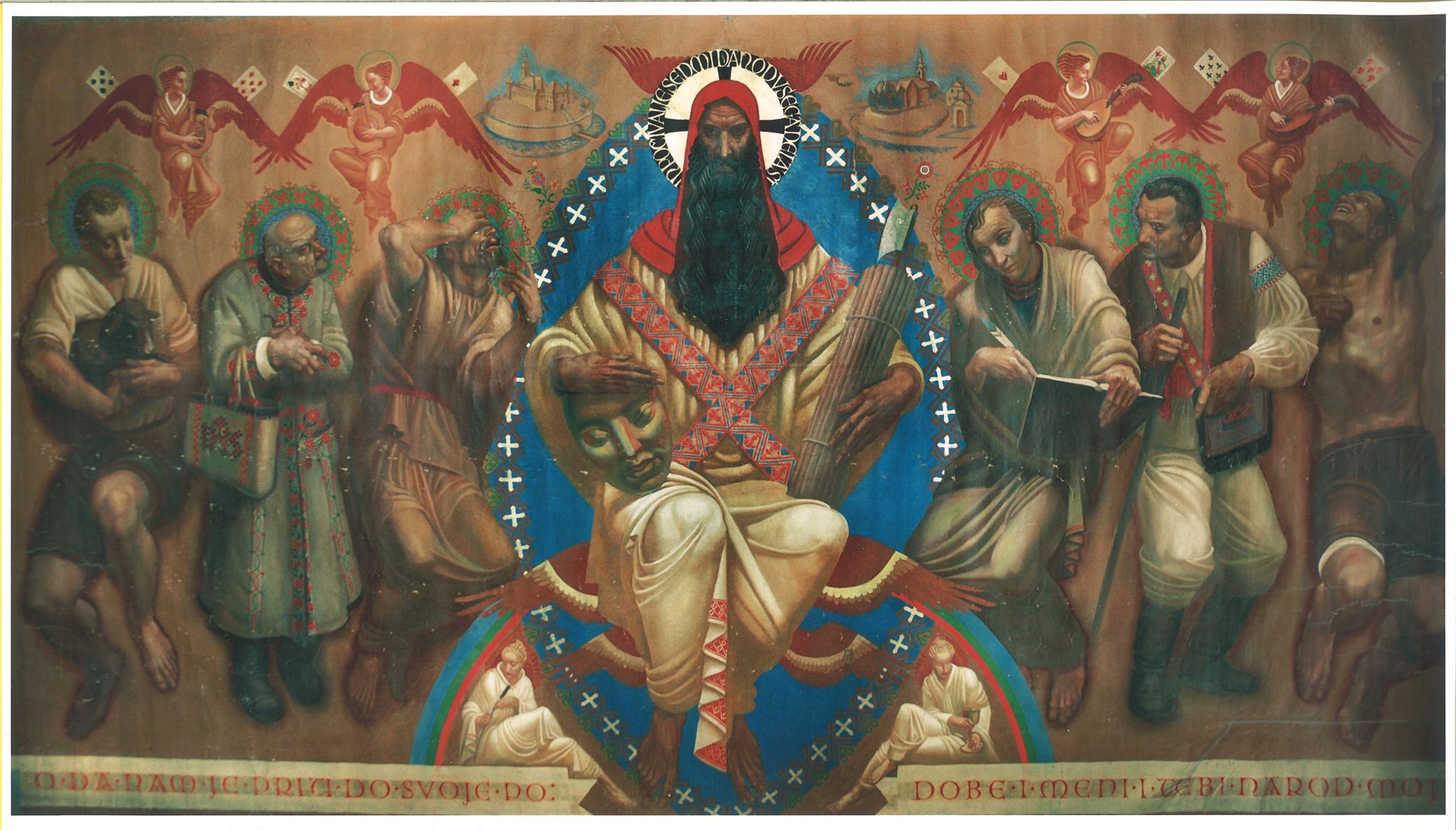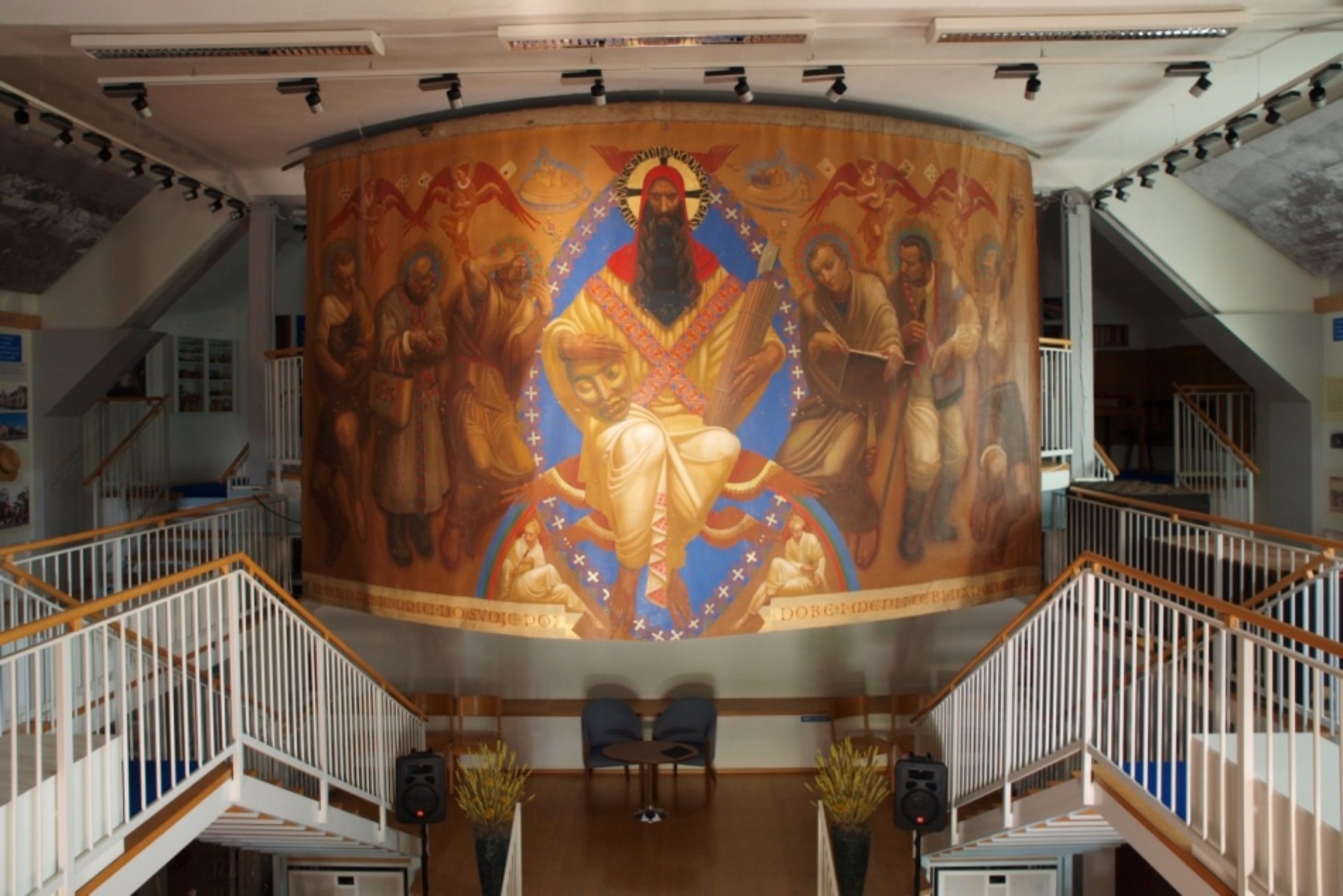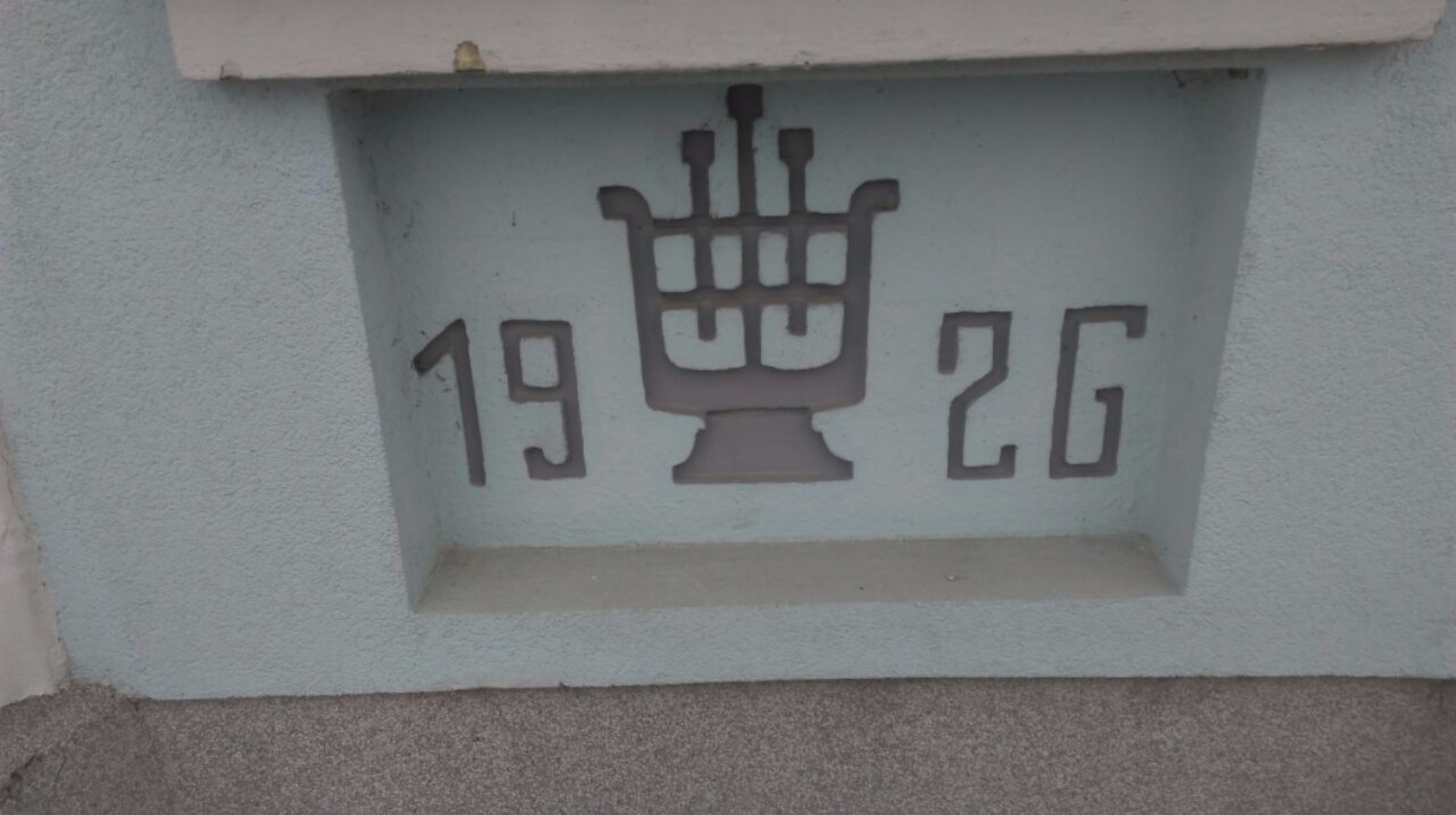The Domžale Concert Band is the oldest provincial concert band in the former Carniola which is still active; the history of the Band can be traced back to 1884 when the first ensemble of firemen-musicians was organised. It also boasts the oldest Slovenian concert-band venue (Domžale Brass Band Community Centre), which was formally inaugurated in 1929.
The Hall’s stage was adorned by a curtain oil painting (610 cm × 330 cm) by painter Slavko Pengov for the Domžale Concert Band between 1926 and 1929. As a matter of fact, the entire eastern wall was painted, that is to say, the entire wall surface to left and right of the stage and the wings, as well as the entire wall above the stage, excluding the ceiling. This depiction is partly visible in the only preserved photograph taken in the interior of the Hall soon after the opening. Apart from architectural elements, the painting mostly gave prominence to portraits of four world-acclaimed composers – Mozart, Wagner, Beethoven and Strauss. The upper part of the picture featured 15 figures in different poses playing various instruments. Centrally above the stage, in between two portraits, a lyre and an angel were painted in an intertwined composition.
Composed with a rich decorative pattern consisting of elements of stylised folk ornamentation, a rosette was painted on the ceiling where a circular air vent outlet is located.
Focusing on the musical symbolism of the painting, one can detect four angels, two of each are represented to the left- and right-hand sides of the depictions of a stronghold and a church. Angels also feature on the wall paintings above the curtain. Angels are intermediaries between God and the Earth, messengers, heralds, guardians, guides, keepers, etc. On the right-hand side, the angels are playing lyres, an instrument in the proper sense of the word that connects the worldly and heavenly spheres. The two angels on the left are playing lutes, a symbol of creation.
In order to prevent its eventual disintegration, the gradually deteriorating curtain was removed. Recently restored, the curtain now adorns the entrance lobby of the Museum of Straw Hat Making, which is located in the same building.
Extracted from The Curtain Painting at the Museum of Straw Hat Making, a text by Roman Kos.
